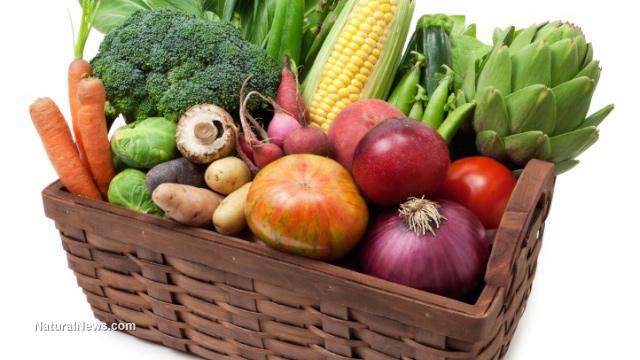(NaturalNews) In December, Berkeley, California, became the first city in the U.S. to pass a soda tax. Navajo Nation, however, is taking this one step further. After almost four years of legislative battle and several attempts, Navajo Nation will become the first place to implement a 2 percent tax on junk food or food items with “minimal-to-no-nutritional value”. The tax will expire and be revised in 2020.
Last year, Navajo implemented an amendment that removed the 5 percent tax on the sale of fresh fruits and vegetables.
For the Dine Community Advocacy Alliance (DCAA), a group made up of volunteers grievously concerned about diabetes and obesity rates on the reservation, the tax is another major achievement.
According to the Navajo-area Indian Health Service, about 10 percent of Navajo Nation residents have diabetes, and another 30 percent are pre-diabetic. In some age groups, obesity rates spike to almost 60 percent.
Junk food tax advocates believe the law will make a positive change and help people to be more mindful about what they put into their mouths. The tax will generate an estimated $1 million a year, which can be used to support health and wellness projects such as the creation of greenhouses, local farmers markets, community gardens, and cooking classes.
Are the people of Navajo as pleased with the tax as the DCAA? The nation is a 27,000-square-mile area where almost half of the population lives under the poverty line. According to the DCAA, there are only ten grocery stores to be found in the entire area, leading many people to turn to gas stations and convenience stores for food shopping.
“Less money for fruits is nice, but it doesn’t even out,” Ann Neagle, who lives on the reservation, told the Los Angeles Times. “For people on a fixed income, we can’t afford things to get more expensive.”
The Los Angeles Times also reported that for one bag of apples, a customer will pay around $7. This could also buy him 30 boxes of Maruchan Ramen Noodles or seven frozen Banquet Value Meals.
Most Navajos understand the relationship between food and health, but many of them simply have no other choice.
“It’s not going to do anything except make it more expensive,” said Preston Yazzie, 20, in the Los Angeles Times. “I’ll still buy chips or whatever. But maybe it’ll help some people.”
The USDA has called the region a “food desert” based on how hard it is to get fresh fruits and vegetables compared to the availability of processed or junk food. Even those who live close to a grocery store do not necessarily have access to healthy food.
In one survey, the DCAA found that approximately 80 percent of a random store’s inventory would fall into the group of junk food or food with “minimal-to-no-nutritional value”.
Denisa Livingston, a spokeswoman for the DCAA who is also a community health advocate and Navajo tribe member, says that she hopes that the removal of tax on fruit and vegetables will increase the demand, which will hopefully improve the availability of fresh, whole foods in local markets and grocery stores.
“This is the start of making people aware that we are living in a food desert – something that’s not normal,” says Livingston. “If you [fusion_builder_container hundred_percent=”yes” overflow=”visible”][fusion_builder_row][fusion_builder_column type=”1_1″ background_position=”left top” background_color=”” border_size=”” border_color=”” border_style=”solid” spacing=”yes” background_image=”” background_repeat=”no-repeat” padding=”” margin_top=”0px” margin_bottom=”0px” class=”” id=”” animation_type=”” animation_speed=”0.3″ animation_direction=”left” hide_on_mobile=”no” center_content=”no” min_height=”none”][compare] the Bashas’ grocery store on the reservation and in Phoenix, looking at the layout, you see they have much more healthy foods available in Phoenix compared to here.”
Navajo is the first ever to implement such a tax, and it is unclear what the future will bring. The biggest challenge will be making the shift from convenient, cheap, processed junk food to fresh, affordable produce available to all people living in Navajo.
Sources for this article include:
http://www.latimes.com/nation/la-na-ff-navajo-tax-20150330-story.html
http://www.dinecollege.edu
http://www.npr.org
[/fusion_builder_column][/fusion_builder_row][/fusion_builder_container]









